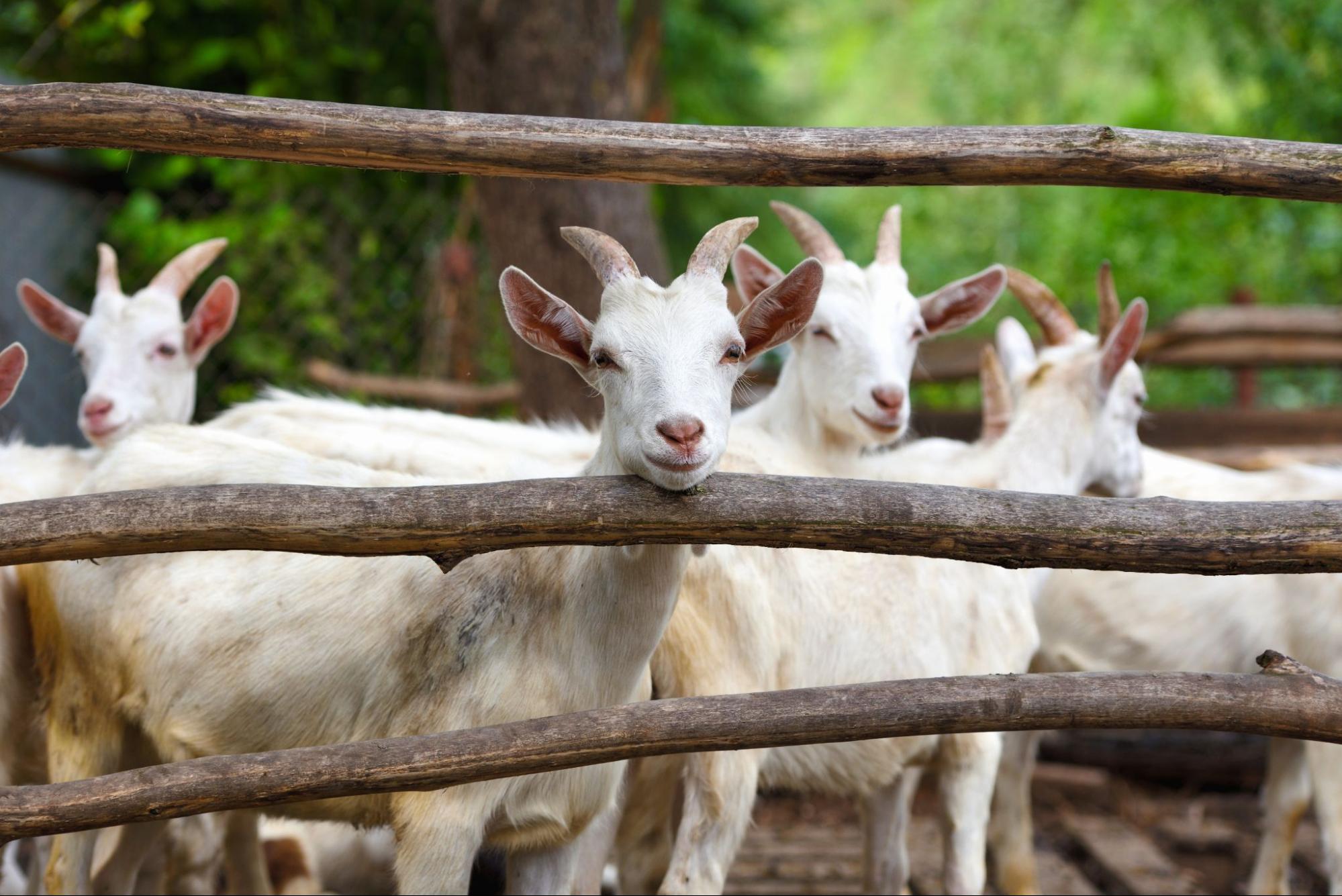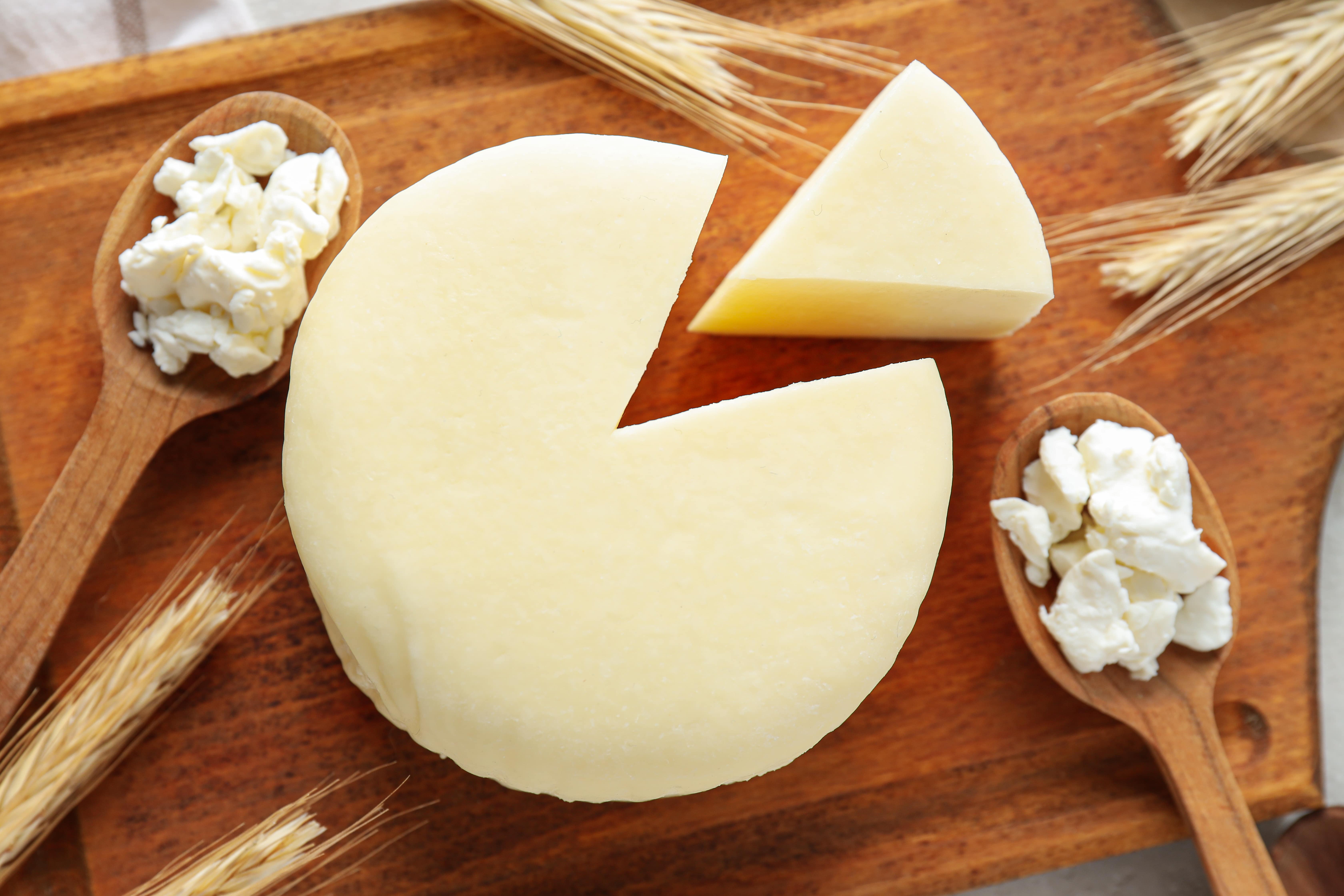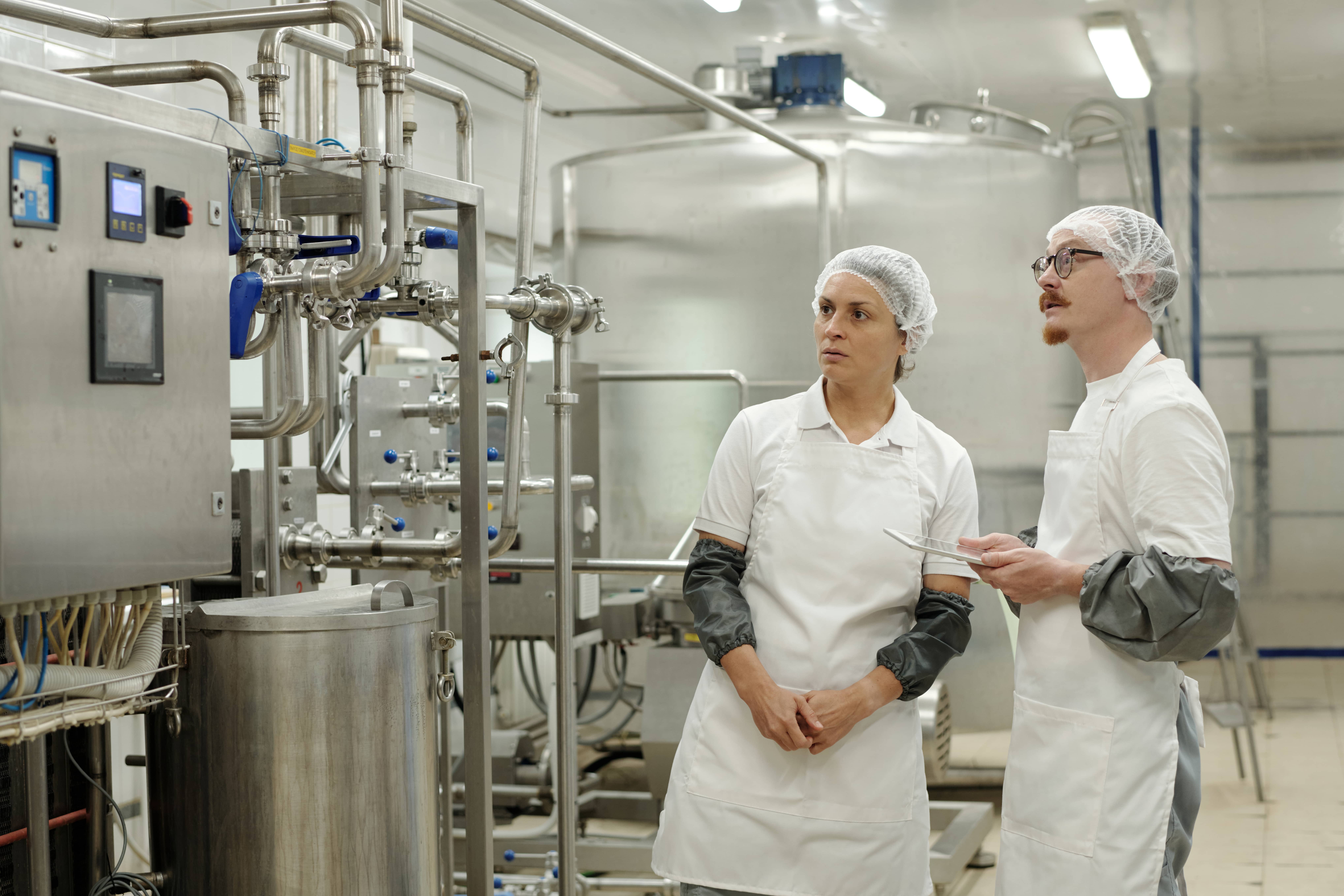Last Updated on November 21, 2025 by Admin
Table of Contents
- Introduction to Goat Farming in India
- How to Start Goat Farming
- Understanding Breeding and Maturity in Goat Farming
- Advantages of Goat Farming
- Goat Farming Management
- Types of Goat Farming
- Risk Factors Lies in the Goat Farming Business in India
- Taking the Right Step Forward
- Conclusion
- Frequently Asked Questions
Goat farming in India has emerged as a profitable and sustainable agricultural practice. With the ever-increasing demand for goat meat, milk, and fibre, many entrepreneurs are exploring how to start goat farming in India. This guide will discuss the essential steps, the advantages of goat farming, the management practices required, the various types of goat farming, and the common goat breeds in India.
Introduction to Goat Farming in India
Goat farming is a profitable and sustainable business in India due to high demand for meat, milk, and manure. Popular breeds include Jamunapari, Beetal, Sirohi, Osmanabadi, and Black Bengal. It requires low investment, making it ideal for small-scale farmers. Essential factors include proper shelter, balanced feeding, disease management, and breeding. Government schemes like NABARD subsidies support farmers financially. Goat farming is especially beneficial in rural areas, offering employment and steady income. With proper management, it can be a highly rewarding agricultural business in India.
How to Start Goat Farming
Starting a goat farming business requires careful planning and execution. Here are the key steps:
Conduct Market Research
Before diving into how to start goat farming in India, it’s important to have an understanding of the market demand for goat products in your region. Analyse the demand for goat meat, milk, and other by-products. Identify potential buyers, including local markets, butcheries, and dairy processors.
Choose the Right Location
Selecting a site for goat farming has a huge impact on profitability. The area must have sufficient grazing land, clean water sources, and good drainage systems. The climate should also be right for the desired breed like, Jamunapari, Beetal, or Sirohi. Ensure easy access to markets for selling meat and milk. Costs are also reduced due to low land prices and being near veterinary services. Expenses related to transportation are also minimized due to proper road connectivity. Flood prone areas should not be used, and a safe, disease free environment is essential for healthy livestock and increased productivity.
Select Appropriate Goat Breeds
Choosing the suitable goat breeds in India is essential for the success of your farm. Some popular breeds include:
- Jamunapari: Known for high milk yield, Jamunapari goats are one of the best dairy breeds in India. They produce 2-3 liters of milk per day with high butterfat content. Their large size and strong build make them ideal for commercial dairy farming, ensuring profitability.
- Barbari: Suitable for meat production, Barbari goats are small but highly productive, maturing quickly for slaughter. Their high fertility rate ensures consistent herd growth, making them ideal for small-scale farmers. They require less feed and adapt well to semi-arid regions, ensuring cost-effective meat farming.
- Sirohi: A dual-purpose breed for milk and meat, Sirohi goats are known for their hardiness and adaptability. They thrive in extreme weather conditions and require minimal care. With a good growth rate and decent milk yield, they are a preferred choice for mixed farming ventures.
- Beetal: Known for good milk production and adaptability, Beetal goats are often compared to Jamunapari due to their high-quality milk and large body size. They also have good meat yield, making them suitable for commercial farming. Their fast reproduction rate ensures sustainable farm growth.
- Pashmina: Known for producing high-quality wool used in luxurious fabrics, Pashmina goats are raised in cold climates like Ladakh. Their wool is extremely fine and warm, making it highly valuable. These goats require special care in harsh weather, but their high-value wool ensures profitability.
- Angora: Famous for their luxurious fiber, making them ideal for fabric production, Angora goats produce soft, silky mohair wool. They require proper grooming and nutrition for high wool yield. Their wool is widely used in premium textiles, making them a lucrative choice for fiber farming.
Develop a Business Plan
Make a detailed goat farming business plan based on your goals, the money you need to invest, and the profits you hope to make. List the number of goats, how much they cost to feed, how much to vet, and how you plan to sell them.
Construct Housing and Infrastructure
A productive and healthy goat shed is crucial for health and productivity. The shed should be raised (2-3 feet) to prevent waterlogging, and it should have adequate ventilation. For durability, use bamboo, wood, or concrete. Construct individual sections for kids, pregnant goats, and sick animals. A clean, dry bedding area reduces the risk of infections. Ensure fencing is in place to guard the goats from predators. There should also be convenient access to water and feed. Well constructed infra-structure helps in reducing diseases, enhances growth rates, and improves the efficiency of the farm.
A Proper Fodder Plan
A balanced fodder plan guarantees good health and productivity.
- Provide green fodder for goat like Napier, Berseem, and Lucerne grass as green fodder. Fodder like hay and straw make up dry fodder and aid in digestion.
- Concentrates like grains and pulses increase weight gain and milk production.
- Ensuring the provisions of mineral mixtures and salt licks makes sheep and goats receive other necessary nutrients.
- Ensure seasonal fodder planning to assure that fodder is available for utilization all year. Implement silage and hay storage for off-seasons.
A well-planned feeding program enhances growth, reproduction and the economic returns of the farm.
Purchase Goats
Purchase goats that are healthy and free of diseases from reliable breeders or livestock markets. Make sure they have been vaccinated and don’t have any illnesses. This is particularly important when developing your goat farming business plan in India, as early investments affect long-term profitability.
Feeding Management and Nutrition
An effective feeding strategy contributes directly towards growth, reproduction, and milk/meat production responsibilities. Farming goats require green fodder (Napier grass, Berseem), dry fodder (hay, straw), and concentrates (grains and oilseeds). Ensure mineral and salt licks are provided to avoid deficiency. Clean drinking water should be accessible at all times. Specific and production oriented schedules are required, with special emphasis on lactating and pregnant goats who require extra nutrients. What can I feed a goat? Balanced, seasonal fodder including fresh grass, hay, pulses, and mineral mixes is ideal. Silage storage and seasonal fodder planning helps in maintaining feed throughout the year. Profitability, fertility, and immunity are just a few benefits among many that come after carefully feeding the goats.
Health Management in Goat Farming
Effective health management is crucial for a successful goat farm. Regular vaccinations (PPR, Foot and Mouth Disease, Enterotoxemia) and deworming prevent infections. Maintain clean and well-ventilated housing to reduce disease risk. Provide a balanced diet with mineral supplements to boost immunity. Isolate sick goats to prevent disease spread. Ensure fresh water availability and proper sanitation. Regular veterinary check-ups help in early disease detection. A well-planned health strategy ensures higher productivity, reduced mortality, and better profitability in goat farming.
Understanding Breeding and Maturity in Goat Farming
Proper breeding management ensures a healthy and productive herd. Most goats reach maturity at 6-8 months, but breeding is ideal at 10-12 months for better fertility. Select high-quality bucks and do to improve genetics. The gestation period is around 150 days, with 1-2 kids per birth. Ensure adequate nutrition for pregnant goats and proper care for newborns. Controlled breeding improves milk yield, meat quality, and overall herd growth, making the farm more profitable and sustainable.
Advantages of Goat Farming
Numerous advantages of goat farming make it a viable agricultural practice:
- Goats have a high birth rate and produce many products so that you can make a good profit.
- Compared to other livestock farming, goat farming doesn’t require a significant starting investment.
- Goats can live in various climates and are less likely to get sick.
- Goat milk business opportunities are growing due to its high nutritional value and digestibility.
- Goat farming gives people in rural places jobs, which is good for the local economy.
Goat Farming Management
Effective goat farming management is essential to ensure the health and productivity of your herd. Here are some vital management practices:
Taking Care of Breeding
Set up a planned breeding program to ensure healthy and useful offspring. Artificial insemination or natural mate-making methods can improve the quality of your herd.
Taking Care of Feeding
Give your goats healthy food and clean water. Make sure they can get fresh food, grains, and vitamin supplements. Monitor their diet and change it as needed. To ensure optimal nutrition for goats, provide a balanced diet comprising 50-60% high-quality forage (like hay or pasture), 20-30% grains (such as corn or oats), and 10-20% protein supplements (like soybean meal). What can I feed a goat? Their ideal diet includes fresh greens, pulses, and mineral-rich supplements. Additionally, offer vitamin and mineral supplements, especially those rich in calcium, phosphorus, and selenium. Always adjust their diet based on age, weight, and production stage?.
Health Care Management
Check on the health of your goats often. Vaccinate them against common diseases, deworm them occasionally, and give them the necessary medical care. Keep the goat sheds clean to keep the illness from happening.
Keeping Records
Write down everything you do for breeding, feeding, health, and output. It will help you track how your herd is doing and make smart decisions about handling them.
Types of Goat Farming
There are different types of goat farming based on the primary purpose of production:

Meat Goat Farming
Here, the main goal is to raise goats for their meat. Because they grow quickly and produce good meat, breeds like Boer, Sirohi and Barbari are often used to make meat.
Dairy Goat Farming
Dairy goat farming involves raising goats to produce milk. People who raise dairy breeds like Jamunapari, Beetal, Black Bengal and Saanen because they produce a lot of milk. Starting a goat milk business can also open opportunities for cheese, yogurt, and cosmetic products.
Fibre Goat Farming
Fibre goat farming is done to get wool or mohair. The high-quality fibre that Angora and Cashmere goats produce is used in clothing.
Mixed Farming
Mixed farming involves production of meat, milk, and fibre. This practice is helpful because it spreads out income sources and lowers the risks associated with market changes.
Risk Factors Lies in the Goat Farming Business in India
The business of goat farming in India is exposed to multiple risks that can compromise profits. Disease outbreaks such as PPR and Foot and Mouth Disease are detrimental and can lead to substantial losses. Seasonal changes impact the Amt’s health via insufficient fodder supply. Volatility of market prices for meat and milk can also lead to lower profits. Poor management practices results in excessive kid mortality which is of concern. Lack of proper security results in predator and theft attacks. Government financial aid is also an area of concern. Effective financial planning, proper management, and routine vaccination is necessary to address these issues.
Taking the Right Step Forward
While understanding how to start goat farming and implementing best practices is crucial, proper training must be considered. Training helps farmers acquire the necessary skills and knowledge to manage their farms effectively. It covers various aspects of goat farming management, including breeding, feeding, health care, and record-keeping. By investing in training, young entrepreneurs can enhance their productivity, minimise losses, and ensure the sustainability of their agricultural ventures. For those interested in venturing into a cow dairy farm, there are similar steps to follow, which include proper planning, selecting breeds, and focusing on health management. For a detailed guide, check out how to start dairy farming.
Also Read: How To Start Fish Farming? Easy Steps For Beginners
Conclusion
Goat farming in India offers a lucrative opportunity for farmers and entrepreneurs. Following the steps outlined in this guide and understanding the advantages of goat farming, you can start a successful goat farming business. An effective goat farming business plan in India and choosing suitable goat breeds in India are critical to your success. With proper planning, market research, and training, you can harness the growing demand for goat products and build a profitable farming enterprise.













